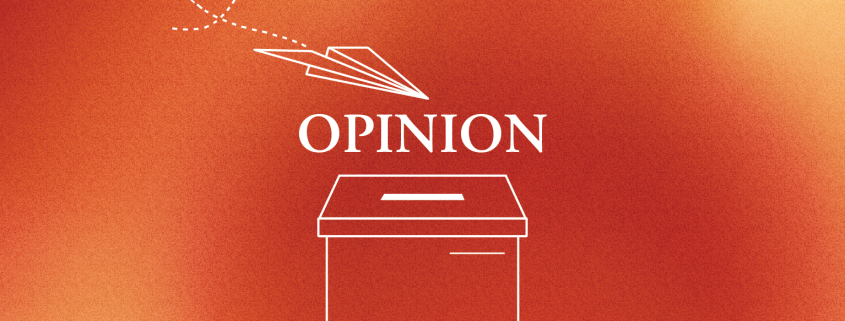The Eck’s Factor: D.A.R.E. v. ‘Euphoria’ dichotomizes mental illness narratives
Content warning: The following contains spoilers of “Euphoria” and mentions sensitive topics, such as drug addiction and suicide.
If you’re reading this, I’m assuming you too have fallen victim to the incessant “Euphoria” spoilers on Twitter and TikTok. You may also be entitled to financial compensation.
Since its second season premiered last month, HBO Max’s “Euphoria” has monopolized entire social media platforms, with users abuzz over the show’s actors, content matter and aesthetic — we simply cannot talk about “Euphoria” without giving due credit to it for glittery eye makeup trends.
Although the show is far from perfect, with scenes from its first season that indeed glamorize drug use with flashy, colorful aesthetics, its most recent episode manages to appropriately portray drug addiction. From another lens, its backlash invokes conversations about censorship and gatekeeping art.
Emmy-award winner Zendaya’s character and show protagonist, Ruby “Rue” Bennett, struggles with a substance use disorder and other mental health issues. In episode five, “Stand Still Like the Hummingbird,” Rue’s friends confide in her mom that she broke her sobriety, which leads to her mom flushing her drugs down the toilet. Consequently, Rue screams, sobs, kicks a hole in a wooden door, hurls herself into oncoming traffic and sneaks into her friends’ and strangers’ houses to hunt for pills and jewelry to pawn.
You cannot have an Emmy-worthy performance or any realistic depiction of mental illness, without somebody giving their unwarranted, out-of-pocket hot take. I saw tweets along the lines of “Rue would not have a drug addiction if she was fully Black” or “Rue is so selfish for doing this to her family.” Let’s be clear: Drug addiction does not discriminate based on race, and it is a disease that people cannot control.
Additionally, Drug Abuse Resistance Education, an anti-drug education program for children and teens, chimed into the conversation with a denunciation of the show: “Rather than further each parent’s desire to keep their children safe from the potentially horrific consequences of drug abuse and other high-risk behavior, HBO’s television drama, ‘Euphoria,’ chooses to misguidedly glorify and erroneously depict high school student drug use, addiction, anonymous sex, violence, and other destructive behaviors as common and widespread in today’s world.”
Ironically, D.A.R.E. itself does not have the best track record when it comes to drug abuse prevention. According to a 10-year longitudinal study conducted by the American Psychological Association, researchers found few differences in drug use and drug attitudes between two groups of 20 year olds, one which received D.A.R.E.’s curriculum and another which received a standard drug education curriculum.
With this episode’s backlash, we see a paradigm of gatekeeping art. D.A.R.E., founded during the Reagan-era, racist, War on Drugs hysteria, believes this media must not be created at all because of “the children” — except, we know that “because of the children” is a very politically-charged scapegoat. Let D.A.R.E serve as a reminder that, like abstinence-only sex education programs and critical race theory erasure, zero-tolerance drug education programs only abnormalize already stigmatized topics.
But we must look at artists’ intention and purpose. Some might disseminate art to a particular audience without any regulation or any research on its potential harm. Others might showcase their craft with the goal of highlighting humanity and evoking compassion from their audience.
Creator of “Euphoria,” Sam Levinson, in fact, based the show on his own experience with drug addiction and rehab as a teenager. It also establishes a rating for mature audiences and content warnings.
On the other hand, “13 Reasons Why” author, Jay Asher, did not conduct research on safely portraying suicide — he merely talked to his niece who attempted killing herself — before writing a story that recklessly portrays Hannah Baker’s suicide as an act of revenge and her character as, according to GoodTherapy, a “heroine” and “modern-day martyr.” Indeed, the show provoked copycat suicides across the world.
Amid calls to censor “Euphoria,” Tennessee school systems continue censoring books such as “Maus,” Art Spiegelman’s acclaimed graphic novel that depicts the Holocaust through mice, cats and pigs.
You can’t make it up — staunch defenders of First Amendment rights, who (misleadingly) tout “1984” and “Fahrenheit 451” as warnings against free speech bans on violent political commentators such as Joe Rogan, suddenly think censorship is necessary when books discuss topics that make them “uncomfortable” — topics such as, unsurprisingly, racism, anti-Semitism and, surprisingly, naked animated mice.
If we want to talk about censorship, we must acknowledge its politicization that continues stigmatizing already-stigmatized issues. D.A.R.E. and others’ concerns with “Euphoria” come from places of ignorance toward drug abuse and a gatekeeping complex that ultimately harms the people they seek to protect. Like books’ censorship in Tennessee, these views only further oppress marginalized communities’ voices.
With responsible portrayals of mental illness, entertainment media can find a way to narrate mental illness’ reality without glamorizing it. In the meantime, we can keep dabbling in the art of eye makeup.
Matthew Eck is a senior writing about hot-button social issues. His column “The Eck’s Factor” runs every other Wednesday. He is also the Wellness & Community Outreach Director at the Daily Trojan.

